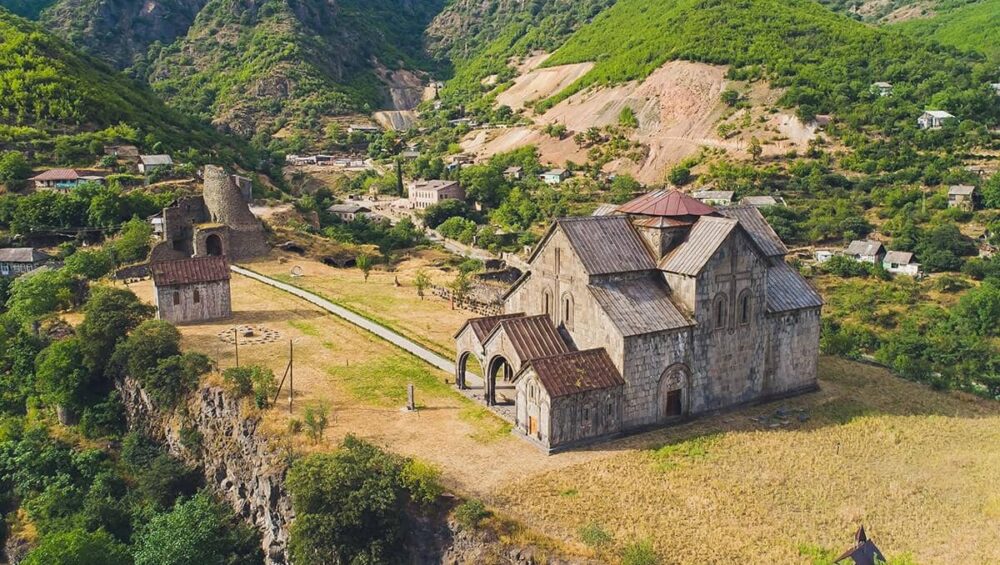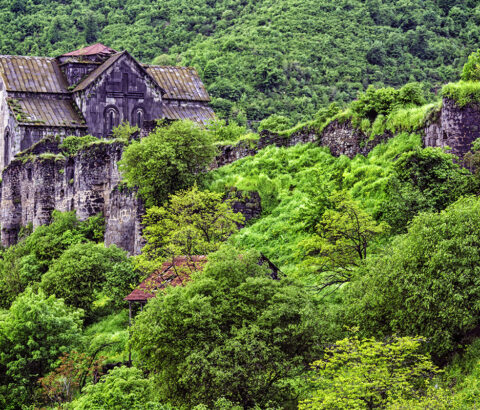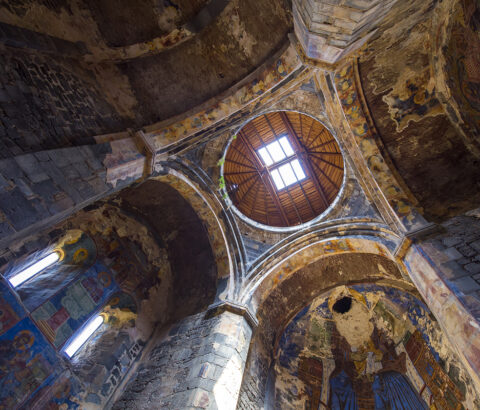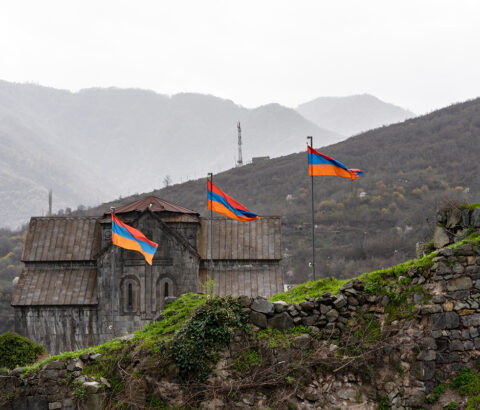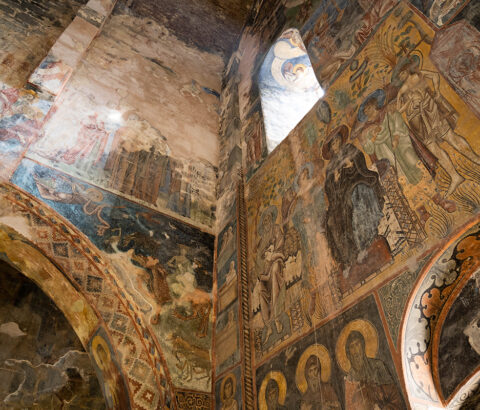Situated on a high cliff overlooking the town of Akhtala, surrounded by deep canyons on its three sides, the monastic complex and fortress of Akhtala was founded in the 10th century, when these areas of the Debed canyon were ruled by the Kiurikian dynasty.
The complex consists of St. Astvatsatsin (Holy Mother of God) church and its portico with a small chapel-sepulcher where, according to medieval historians, Prince Ivaneh Zakarian and his son Avag are buried, the fortress walls, the 13th-century tower and gate, the cells of the monks, the bath, the 13th-century single nave church, as well as remnants of other structures.
It is assumed that the name “Akhtala” has Turkic origins and means “white glade,” while the site’s original name in Armenian that was used until the 15th century was ‘Pghndzahank’ (Copper Mine), referring to the rich copper deposits found in the area. In 1887-1889, the French archaeologist Jacques de Morgan conducted excavations in and around Akhtala and discovered 576 rectangular stone sepulchers, and various cultural items made of clay, bronze, and iron dating back to the 8th century BCE.
 Quick Info
Quick Info
What's Nearby
The architectural gem of the monastic complex of Akhtala is St. Astvatsatsin church. This unique church features a harmonious combination of Armenian, Georgian, and Byzantine architectural and artistic elements.
When in the end of 12th century Akhtala became the property of Prince Ivaneh Zakarian, who had converted to Chalcedonian Orthodoxy while serving in the Georgian court, the monastery, along with several other monasteries in the north of Armenia, was, too, converted to Chalcedonian (Byzantine) Orthodoxy. Akhtala became the religious center for Chalcedonian Armenians.
The St. Astvatsatsin church is renowned for its frescoes, which are described as one of the best examples of Byzantine art outside the traditional borders of Byzantine empire. Most of the murals feature inscriptions in Armenian, Greek, and Georgian.
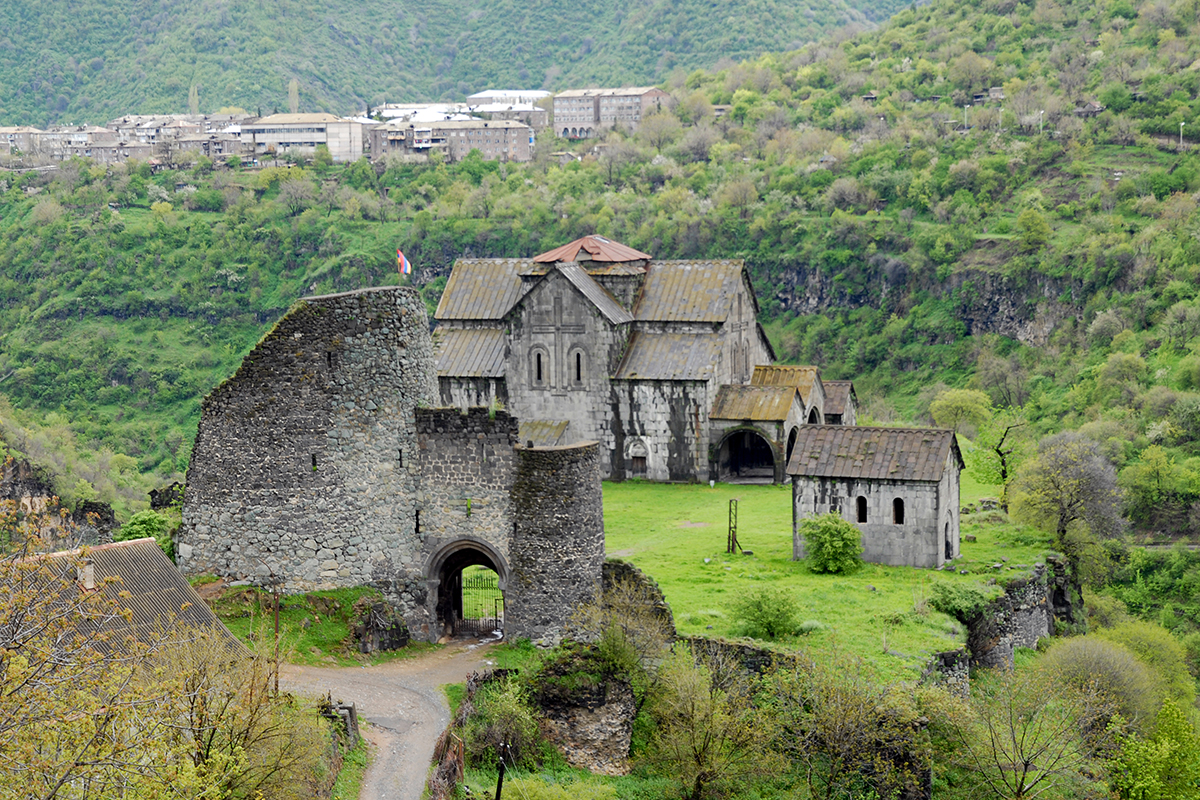
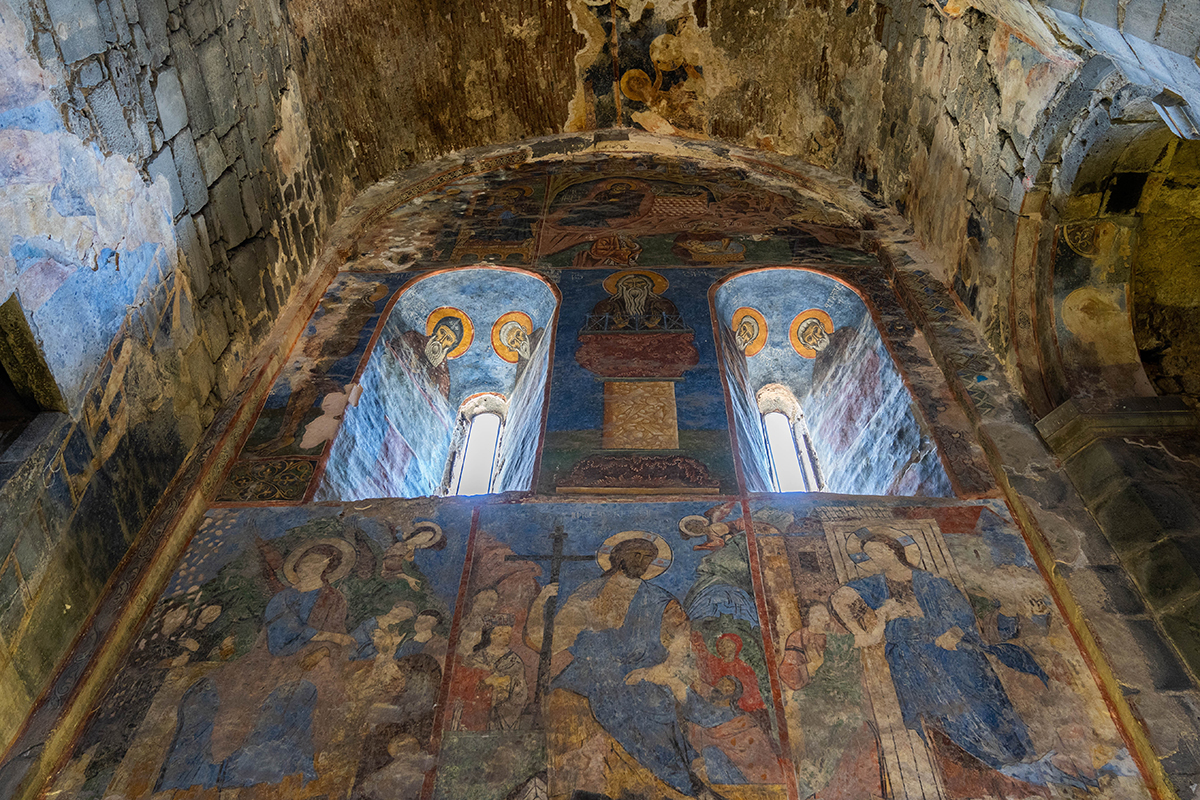
The murals depict scenes from Old and New Testaments, images of saints, including Gregory the Illuminator. The dome features a large mural of Madonna with baby Jesus which, according to lore, was partly damaged during Tamerlane’s invasion of Armenia. Below Madonna is the scene of Communion with Jesus breaking bread with the apostles. The images of the apostles Peter, John and Paul, as well as the evangelists Matthew and Luke have survived. Other murals depict Christian saints, the trial of Jesus by Pontius Pilate and High Priest Caiaphas.
The numerous fortifications, churches and chapels dating back to the 10th-13th centuries that are found around the village of Akhtala prove that Akhtala was once a major defensive and religious center. Frome the end of the 18th century, the monastery served the community of Greeks who settled down in Akhtala and worked in its gold and silver mines. Some of these Greek communities still survive in the area.
Interesting fact: Akhtala was one of the locations where some scenes of the 1969 Soviet Armenian art film “The Color of Pomegranates,” written and directed by Sergei Parajanov, were filmed.

